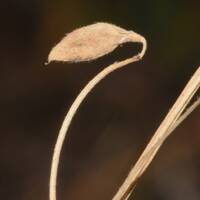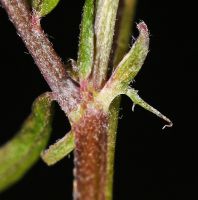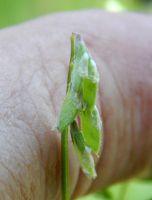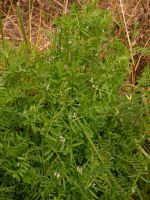Distribution: Occurring west of the Cascades crest and east in the Columbia River Gorge in Washington; Alaska to California, also in Idaho and Montana.
Habitat: Roadsides, forest edge, meadows, thickets, wastelots, and other disturbed open areas.
Flowers: April-July
Origin: Introduced from Europe
Growth Duration: Annual
Conservation Status: Not of concern
Pollination: Bumblebees, bees, butterflies, flies
Slender, puberulent, clambering annual, the stem 3-7 dm. tall.
Leaves pinnate, the tendrils well-developed; leaflets 14-18, linear, 1-2 cm. long, usually with a very shallow notch and needle-like tip; stipules 2-5 mm. long, linear, lobed at base.
Inflorescence of axillary racemes on slender peduncles shorter than the leaves; racemes with 3-8 whitish or pale blue, pea-like flowers 3-4 mm. long; the 5 calyx teeth lanceolate, equal to the tube; style densely bearded at the tip.
Pod hairy, 2-seeded, 1 cm. long.
Publication: Nat. Arr. Brit. Pl. 2: 614-615. 1821.
PNW Herbaria: Specimen records of Vicia hirsuta in the Consortium of Pacific Northwest Herbaria database
WA Flora Checklist: Vicia hirsuta checklist entry
OregonFlora: Vicia hirsuta information
E-Flora BC: Vicia hirsuta atlas page
CalPhotos: Vicia hirsuta photos











































